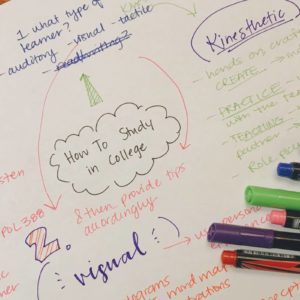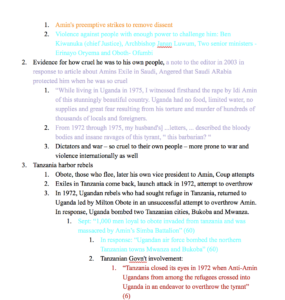After enjoying a summer of traveling, volunteering, camping, interning, hanging out with friends or whatever other shenanigans you might have been up to, it can be difficult to get back into the Princeton mindset.
Even though we are already a month in to the semester, I am still trying to remember how to do school! If you’re anything like me, you’re still working to rebuild your study habits. As we all begin to prepare for midterms (eek!), here are some study tips and tactics tailored to your learning style.

First, it’s important to figure out what type of learner you are. According to Neil Fleming’s VAK model, there are three primary ways of learning:
- Auditory – listening/speaking
- Visual – reading, drawing, imagining
- Kinesthetic – tactile, hands on, experiential
Take this buzzfeed quiz to find out your learning type and then scroll down below to find the tips best suited for you and your learning style!
AUDITORY
You learn best by listening and/or reciting. Here are some study tips for you:
- With you professors consent, record lectures and listen back later, maybe while on a run, or showering, or folding your laundry.
- Record yourself reading your notes aloud and listen back later. Hearing the information in your own voice can be really helpful for memorization.
- Find a study buddy. Talk over the material. Ask each other questions and quiz one another. Better yet: review together over a meal, while on a run, etc.
- Reread your notes out loud to yourself or a partner.
- For languages: listening to music in your language is a great way to learn an accent, work on pronunciation, and expand your vocabulary. Spotify has great playlists in foreign languages.
VISUAL

It is valuable for you to see the information and visualize the connections between topics. You learn best by reading or viewing pictures.
- Draw mind maps. Think big! On large paper/poster draw out the main concepts you’re studying. Connect similar ideas and expand on larger topics. As a visual learner, I can attest to the value of mind maps! Especially when writing papers, mind-maps are great for organizing your ideas and visualizing how ideas come together to form larger concepts and themes.
- Graphics are key! Illustrate your notes! Draw flow charts to illustrate a process in biology or a chain of events in history.
- Get that academic aesthetic! Color code your notes. Ex: Highlight key terms in yellow. Underline difficult concepts in red. Write important rules/patterns in blue. Capitalize reoccurring themes.
- Print your notes (if typed) and annotate them. Highlight, add notes from precept, draw arrows connecting ideas, etc.
KINESTHETIC
You are a tactile learner. You learn best by doing! You need to experience what you are learning.
- Create something! Index cards are a great hands-on study tool.
- Practice what you learn: As you read your textbook, do the practice problems as you read rather than just following along in the book.
- Role play! Act out what you learned in your last lecture with a study buddy. (Laughing right now as I imagine myself pretending to be Napoleon invading Russia.)
- Try teaching a classmate. (This one is key!) If you know something well enough to explain/show to someone else, you must have a good grasp.
Need more personalized study tips? Check out McGraw Learning Center’s learning strategies consultants page where you can make an appointment with a consultant to make a study plan tailored to you!
Good luck studying!
— Raya Ward, Natural Sciences Correspondent

